5754 Aluminum Plate Sheet
Temper: H111/H22 Precise Size
What is Material Grade 5754?
The material grade 5754 is an aluminum alloy belonging to the 5xxx series. It is a wrought aluminum alloy mainly composed of aluminum, magnesium, and small amounts of other elements.
Characteristic
- 5754 aluminum has the characteristics of medium strength, good corrosion resistance, weldability and easy processing and forming.
- 5754 is one of the typical representatives of Al-Mg alloys.
- Excellent processing performance, high fatigue strength, high weldability and medium static strength.
- 5754 is slightly stronger than 5052 alloy, but less ductile.
Main application
- 5754 aluminum in different heat treatment states is the main material in the automotive manufacturing industry and is used to manufacture car doors, molds and seals.
- The can industry also widely uses 5754 aluminum as the main material.
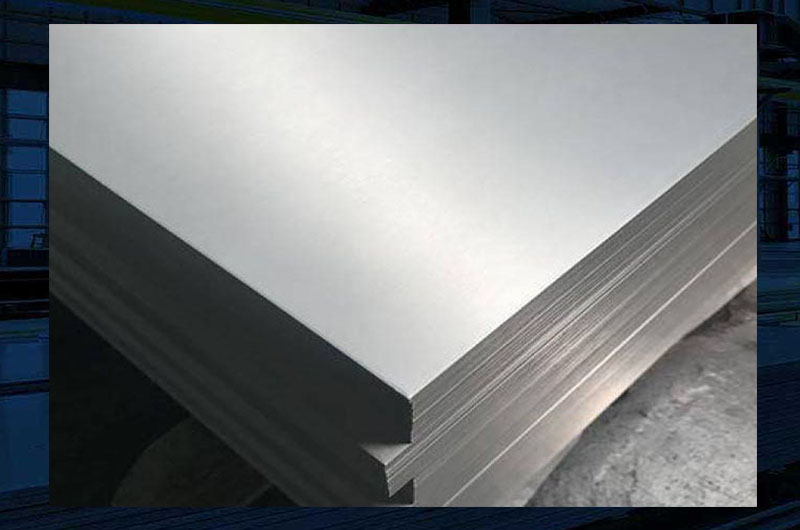
5754 aluminum alloy has excellent corrosion resistance, especially in marine environments. It has good resistance to both seawater and industrial chemicals, making it suitable for applications where corrosion resistance is critical.
5754 Aluminum Plate Features
- Related Alloys: 5754 aluminum is closely related to the 5154 and 5454 aluminum alloys, which both contain magnesium as an alloying element. These alloys may have some differences in properties and applications.
- Processing Methods: 5754 aluminum can be formed by rolling (hot or cold rolling), extrusion, and forging. However, it is important to note that 5754 alloys cannot be prepared by casting, unlike some other aluminum alloys.
- Cold Working: 5754 aluminum alloy can achieve higher strength during cold working, but this usually results in reduced ductility. Therefore, the method of cold working can be selected according to the requirements of the specific application to balance strength and ductility.
- Corrosion Resistance: 5754 aluminum alloy has excellent corrosion resistance, especially when affected by moisture and corrosive environments.
- Heat Treatment: 5754 aluminum can be heat treated to improve its properties, such as increasing strength. Common heat treatments include solution treatment and aging treatment.
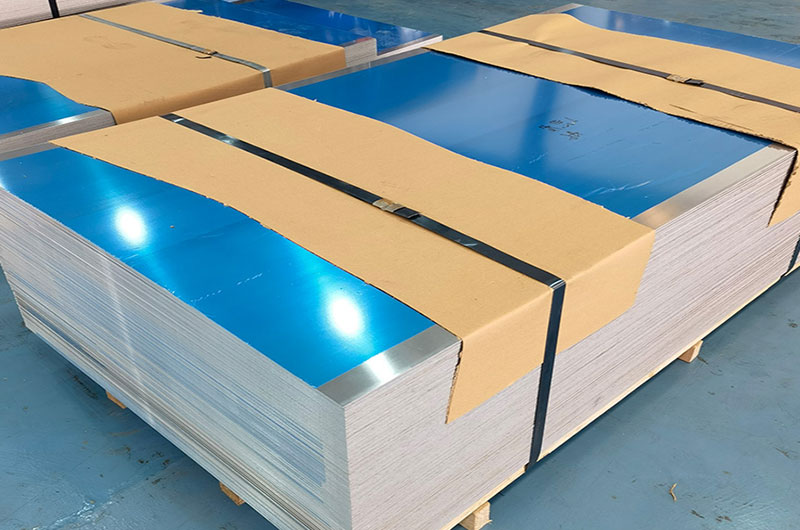
Note: The specific properties of 5754 aluminum will be affected by factors such as tempering conditions, processing, and the specific supplier or manufacturer. It is recommended to consult the supplier's technical data or industry standards for accurate and current information on the properties of 5754 aluminum for your intended application.
Aluminum Plate 5754 Specifications
Following are some key characteristics and properties of 5754 aluminum alloy:
5754 Aluminum Plate Commonly Used Temper
- H111: Annealed and slightly strain hardened. It has limited strength but excellent formability.
- H22: Strain hardened and partially annealed. It provides higher strength and good formability.
- H32: Strain hardening and stabilization. It provides higher strength and good formability.
- H34: Strain hardened and stabilized, similar to H32 but stronger.
- H36: Strain hardened and stabilized, providing higher strength than H34.
- H38: Strain hardened and stabilized, providing the highest strength of the 5754 alloy.
| Temper | Thickness | Yield Strength | Tensile Strength | Elongation | Hardness1) | |
| Rp0.2 | Rm | A50 | A | |||
| [mm] | [N/mm2] | [N/mm2] | [%] | [%] | HBW | |
| O/H111 | > 0.2–0.5 | ≥ 80 | 190–240 | ≥ 12 | - | 52 |
| > 0.5–1.5 | ≥ 80 | 190–240 | ≥ 14 | - | 52 | |
| > 1.5–3.0 | ≥ 80 | 190–240 | ≥ 16 | - | 52 | |
| > 3.0–12.5 | ≥ 80 | 190–240 | ≥ 18 | - | 52 | |
| > 12.5–100.0 | ≥ 80 | 190–240 | - | ≥ 17 | 52 | |
| H112 | ≥ 6.0–12.5 | ≥ 100 | ≥ 190 | ≥ 12 | - | 62 |
| > 12.5–25.0 | ≥ 90 | ≥ 190 | - | ≥ 10 | 58 | |
| > 25.0–40.0 | ≥ 80 | ≥ 190 | - | ≥ 12 | 52 | |
| > 40.0–80.0 | ≥ 80 | ≥ 190 | - | ≥ 14 | 52 | |
| 5754 H12 | > 0.2–0.5 | ≥ 170 | 220–270 | ≥ 4 | - | 66 |
| > 0.5–1.5 | ≥ 170 | 220–270 | ≥ 5 | - | 66 | |
| > 1.5–3.0 | ≥ 170 | 220–270 | ≥ 6 | - | 66 | |
| > 3.0–6.0 | ≥ 170 | 220–270 | ≥ 7 | - | 66 | |
| > 6.0–12.5 | ≥ 170 | 220–270 | ≥ 9 | - | 66 | |
| > 12.5–40.0 | ≥ 170 | 220–270 | - | ≥ 9 | 66 | |
| 5754 H14 | > 0.2–1.5 | ≥ 190 | 240–280 | ≥ 3 | - | 72 |
| > 1.5–6.0 | ≥ 190 | 240–280 | ≥ 4 | - | 72 | |
| > 6.0–12.5 | ≥ 190 | 240–280 | ≥ 5 | - | 72 | |
| > 12.5–25.0 | ≥ 190 | 240–280 | - | ≥ 6 | 72 | |
| 5754 H16 | > 0.2–0.5 | ≥ 220 | 265–305 | ≥ 2 | - | 80 |
| > 0.5–6.0 | ≥ 205 | 265–305 | ≥ 3 | - | 80 | |
| 5754 H18 | > 0.2–0.5 | ≥ 250 | ≥ 290 | ≥ 1 | - | 88 |
| > 0.5–3.0 | ≥ 250 | ≥ 290 | ≥ 2 | - | 88 | |
| 5754 H22/H32 | > 0.2–0.5 | ≥ 130 | 220–270 | ≥ 7 | - | 63 |
| > 0.5–1.5 | ≥ 130 | 220–270 | ≥ 8 | - | 63 | |
| > 1.5–3.0 | ≥ 130 | 220–270 | ≥ 10 | - | 63 | |
| > 3.0–6.0 | ≥ 130 | 220–270 | ≥ 11 | - | 63 | |
| > 6.0–12.5 | ≥ 130 | 220–270 | ≥ 10 | - | 63 | |
| > 12.5–40.0 | ≥ 130 | 220–270 | - | ≥ 9 | 63 | |
| 5754 H24/H34 | > 0.2–1.5 | ≥ 160 | 240–280 | ≥ 6 | - | 70 |
| > 1.5–3.0 | ≥ 160 | 240–280 | ≥ 7 | - | 70 | |
| > 3.0–6.0 | ≥ 160 | 240–280 | ≥ 8 | - | 70 | |
| > 6.0–12.5 | ≥ 160 | 240–280 | ≥ 10 | - | 70 | |
| > 12.5–25.0 | ≥ 160 | 240–280 | - | ≥ 8 | 70 | |
| 5754 H26/H36 | > 0.2–1.5 | ≥ 190 | 265–305 | ≥ 4 | - | 78 |
| > 1.5–3.0 | ≥ 190 | 265–305 | ≥ 5 | - | 78 | |
| > 3.0–6.0 | ≥ 190 | 265–305 | ≥ 6 | - | 78 | |
| 5754 H28/H38 | > 0.2–1.5 | ≥ 230 | ≥ 290 | ≥ 3 | - | 87 |
| > 1.5–3.0 | ≥ 230 | ≥ 290 | ≥ 4 | - | 87 | |
5754 Aluminum Plate Width and Length
The width and length of the 5754 aluminum plate can be varied according to specific requirements, and custom sizes are available.
- Standard widths: typically between 1, 000mm and 2, 500mm (39" to 98")
- Standard lengths: between 2, 000mm and 3, 000mm (79" and 118"). Thickness: 5754 Aluminum Sheet Thickness: Typically ranges from 0.2 mm to 200 mm (0.008 in to 7.9 in).
5754 Aluminum Plate Surface Treatment
The surface of 5754 aluminum plate can be treated in a variety of ways, including:
- Mill finish: Standard untreated surface appearance.
- Anodizing: An electrochemical process that enhances corrosion resistance and provides a decorative finish.
- Coated Finish: Applying a coating, such as paint or powder coating, to improve aesthetics and provide additional protection.
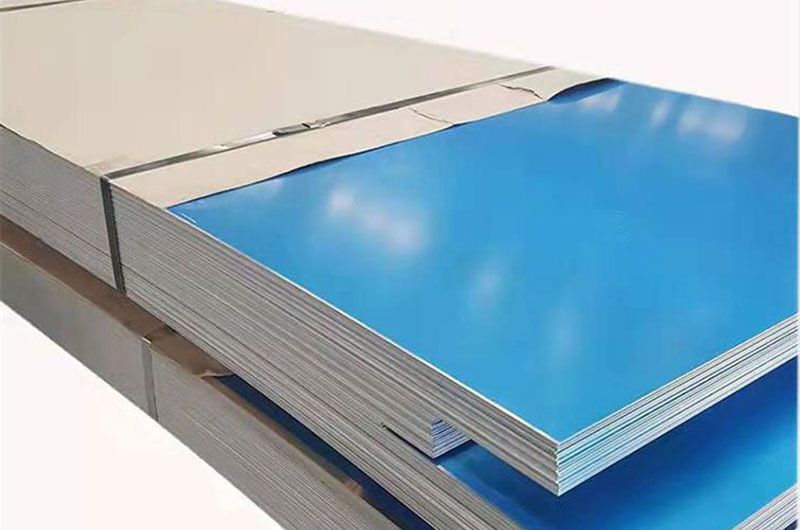
5754 Aluminum Plate Certifications
Depending on the supplier, the 5754 aluminum sheet may carry certifications such as ISO 9001 (Quality Management Systems) or other industry-specific certifications.
5754 Aluminum Plate Standards
Common production standards for 5754 aluminum sheets include:
- ASTM B 209: Standard Specification for Aluminum and Aluminum-Alloy Sheet and Plate
- EN 485-2: Aluminum and aluminum alloys. Sheet, strip, and plate. Mechanical properties
- EN 573-3: Aluminum and aluminum alloys. Chemical composition and form of wrought products. Chemical composition and form of products
- EN 754-2: Aluminum and aluminum alloys. Cold drawn rod/bar and tube. Mechanical properties
- ISO 6361: Wrought Aluminum and Aluminum Alloy Sheets, Strips and Plates
5754 Aluminum Equivalent
- EN AW-5754: This is the European nomenclature according to the Aluminum Association (AA) nomenclature system.
- AlMg3: This is the name used in Germany and some European countries. "Al" refers to aluminum and "Mg" refers to magnesium, which is the main alloying element in 5754 aluminum.
- A95754: This is another designation used in the aluminum industry and generally follows the AA designation system.
- ISO AlMg3: ISO stands for International Organization for Standardization, and "AlMg3" stands for an aluminum-magnesium alloy with a magnesium content of 3%.
- N5: This is the name used in Japan for the 5xxx series of aluminum alloys, including 5754.
- 3.3535: This is the name used by some European countries according to the nomenclature system of the International Union of Pure and Applied Chemistry (IUPAC).
- AIMg3: This is another name commonly used in Europe, where "AIMg" stands for an aluminum alloy containing magnesium.
Aluminum 5754 Mechanical Properties
The mechanical properties of 5754 aluminum plates vary with tempering conditions. The following are typical values for H32 status:
- Density: 2.67 g/cm3, or 167 lb/ft3.
- Young's modulus: 69 GPa, or 10 Msi.
- Ultimate tensile strength: 220 to 330 MPa.
- Yield Strength: 130 MPa
- Elongation: 12%
- Thermal Conductivity: 130 W/m-K.
- Thermal Expansion: 23.7 μm/m-K.
5754 Aluminum Chemical Composition
The chemical composition of the 5754 aluminum plate is usually as follows:
- Aluminum (Al): 97.3%
- Magnesium (Mg): 2.6%
- Manganese (Mn): 0.4%
- Chromium (Cr): 0.3%
- Other (each): 0.05%
- Other (total): 0.15%
It is important to note that the specifications presented here are general and may vary depending on specific suppliers, manufacturing processes, and industry standards. For accurate and up-to-date information, it is recommended to refer to the material specification provided by the supplier or to consult the industry standard relevant to your specific application.
5754 aluminum plate weldability
The alloy has excellent weldability and improved processability. The 5754 can be used in market segments such as marine, oil and gas, chemical and nuclear.
- Solderability - Gas: Excellent
- Weldability – Arc: Excellent
- Solderability – Resistance: Excellent
- Brazeability: Poor
Corrosion resistance of 5754 aluminum plate
5754 aluminum alloy is a stronger material than 5251 and has good processability. Its main characteristic is that the alloy offers excellent resistance to seawater and industrial chemical corrosion.
Advantages and disadvantages of 5754 aluminum sheet
It has excellent corrosion resistance, high strength and good weldability. As a deformed alloy, it can be formed by rolling, extruding and forging. One disadvantage of this aluminum is that it is not heat treatable and cannot be used for casting.
Typical Al 5754
-
5754 h111 Aluminum Plate Sheet
5754 H111 aluminum plate is a rust-proof aluminum plate with good corrosion resistance. 5754 H111 aluminum has a wide range of uses and is mainly used in fields that require corrosion resistance such as ships and construction to improve the service life and safety of ships.
-
5754 h22 Aluminum Plate Sheet
5754 h22 aluminum refers to H22 tempered 5754 alloy. 5754 h22 Annealed to quarter hardness. Generally speaking, 5754 h22 alloy is widely used in welded structures, vehicles, marine applications, etc.
5754 H111 Aluminum Plate
The H111 temper condition is a strain hardening temper achieved by controlled cooling of the material after the thermal working process.
5754 H111 aluminum plate is characterized by moderate strength and excellent corrosion resistance.
It is commonly used in applications where formability, weldability, and corrosion resistance are critical, such as marine structures, transportation components, and storage tanks.
The H111 temper provides improved mechanical properties compared to the annealed condition.
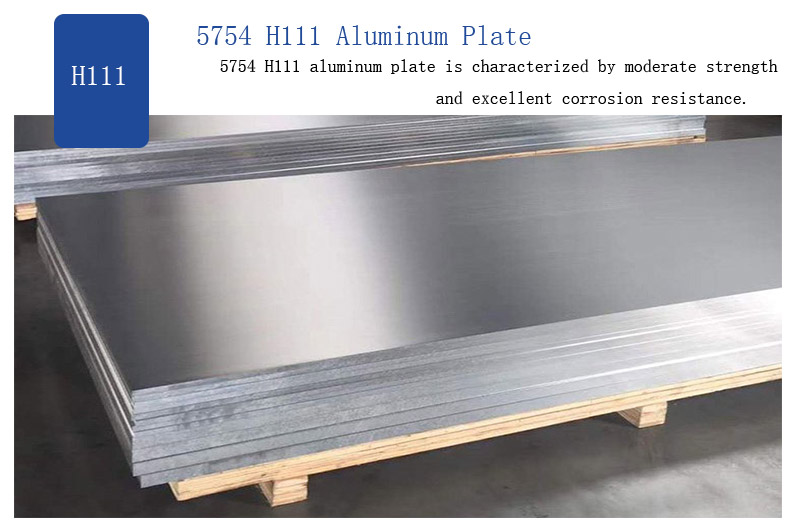
5754 H22 Aluminum Plate
The H22 temper condition is also a strain hardening temper achieved by controlled cooling after the hot working process.
Compared to the H111 temper, the 5754 H22 aluminum plate has higher strength, making it suitable for applications requiring higher mechanical properties.
It has good corrosion resistance and formability.
H22 tempers are commonly used in roofing, siding, facades, and other structural components in the construction industry.
It is also used in general sheet metal applications where strength, formability, and corrosion resistance are important considerations.
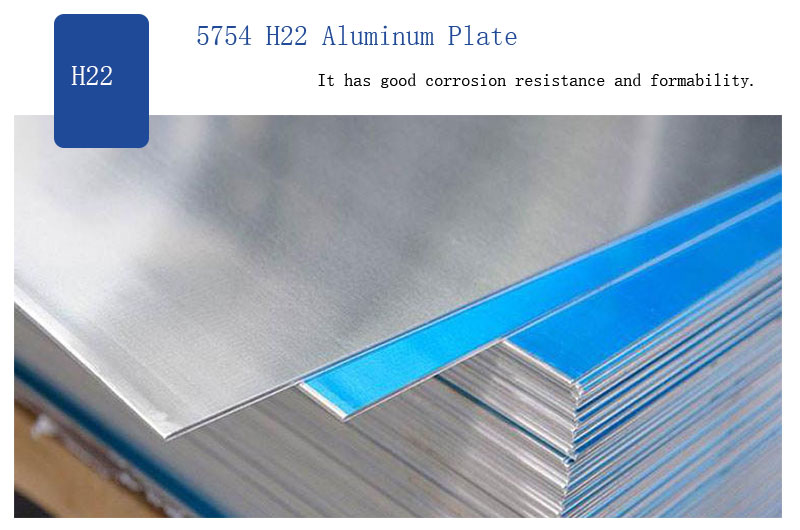
What is 5754 Aluminum Alloy Used for?
5754 aluminum alloy is used in various industries due to its good combination of properties. Some typical applications for 5754 aluminum include:
Al 5754 Automotive
5754 aluminum is used in automotive components and structures where it has advantages in lightweight, corrosion resistance, and formability. Common applications include:
- Body Panels
- Chassis Components
- Fuel Tanks
- Heat Exchangers
Alloy Combinations: In some cases, 5754 can be combined with other aluminum alloys such as 6061 or 6063 for specific automotive components. For example, 6061 or 6063 can be used for structural parts with higher strength requirements.
Al 5754 Marine
The excellent corrosion resistance of 5754 aluminum makes it ideal for marine applications. It is used for:
- Boat Hulls
- Decks
- Superstructures
- Marine Fittings and Fixtures
Alloy Combinations: In marine environments, 5754 can be combined with other aluminum alloys such as 5083 or 5086 to provide increased strength and better corrosion resistance. 5083 and 5086 are typically used for critical structural components such as hulls and decks.

5754 Aluminum Alloy for Transportation
5754 aluminum is used in a variety of transportation applications for its lightweight and corrosion resistance, including:
- Truck/Trailer Bodies
- Railway Cars
- Tanker Trucks
- Air Cargo Containers
Alloy Combinations: Although 5754 can be used alone, in some cases it can be combined with other alloys according to specific requirements. For example, in truck/trailer bodies, a combination of 5754 and 6061 can be used, with 5754 for body panels and 6061 for structural components.
Construction Industry
The formability and corrosion resistance of 5754 aluminum makes it suitable for architectural applications such as:
- Roofing and Siding Panels
- Facades
- Architectural Components
- Interior Structures
Alloy Combinations: 5754 is often used as a stand-alone alloy for architectural applications. However, alloys such as 6061 or 6082 can be combined with 5754 for specific structural components requiring higher strength.
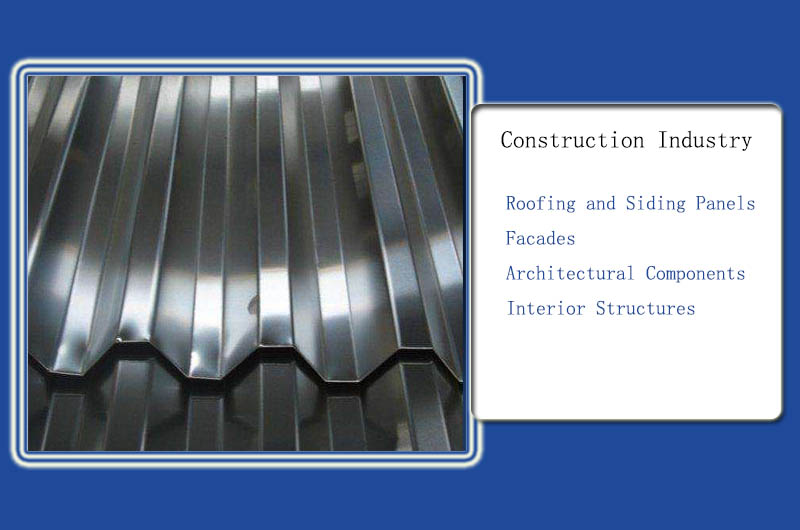
Industrial Equipment
5754 aluminum is used in a variety of industrial equipment, where it has advantages in corrosion resistance and mechanical properties, such as:
- Storage Tanks
- Pipelines
- Process Equipment
- Heat Exchangers
Alloy Combinations: 5754 is often used alone in industrial equipment. However, depending on the specific application and requirements, other alloys such as 5083 or 5086 can be combined with 5754 for increased strength and corrosion resistance.
General Sheet Metal Applications
5754 aluminum is commonly used in the sheet metal fabrication of a variety of structural components, including:
- Panels
- Ductwork
- Enclosures
- Cabinets
These are just a few examples of typical applications for 5754 aluminum. The alloy's versatility and desirable properties make it suitable for a wide range of industries and applications where light weight, corrosion resistance, and formability are important considerations.
-
5754 Automotive Aluminum Plate Sheet
5754 Automotive Aluminum Plate Sheet has good formability and can be easily formed into various automotive parts by rolling, bending, and stamping processes. It can be formed into complex shapes while maintaining its strength and integrity.
-
5754 Aluminum Plate for Tankers
5754 Aluminum Plate for Tankers Its light weight, corrosion resistance, durability and formability make it an ideal material for all types of tankers.
-
5754 marine aluminum plate is a deformed aluminum-magnesium alloy known for its excellent performance in the marine industry.
Common sizes and weight of 5754 aluminum plate
| Product | Size | Weight(kg) |
| Alu sheet EN AW-5754 | 2000x1000x1 | 5.508 |
| Alu sheet EN AW-5754 | 2500x1250x1 | 8.606 |
| Alu sheet EN AW-5754 | 3000x1500x1 | 12.393 |
| Alu sheet EN AW-5754 | 2000x1000x1, 5 | 8.262 |
| Alu sheet EN AW-5754 | 2500x1250x1, 5 | 12.909 |
| Alu sheet EN AW-5754 | 3000x1500x1, 5 | 18.59 |
| Alu sheet EN AW-5754 | 2000x1000x2 | 11.016 |
| Alu sheet EN AW-5754 | 2500x1250x2 | 17.213 |
| Alu sheet EN AW-5754 | 3000x1500x2 | 24.786 |
| Alu sheet EN AW-5754 | 6000x1500x2 | 49.572 |
| Alu sheet EN AW-5754 | 2500x1250x2, 5 | 21.52 |
| Alu sheet EN AW-5754 | 2000x1000x3 | 16.524 |
| Alu sheet EN AW-5754 | 2500x1250x3 | 25.819 |
| Alu sheet EN AW-5754 | 3000x1500x3 | 37.179 |
| Alu sheet EN AW-5754 | 4000x1500x3 | 49.57 |
| Alu sheet EN AW-5754 | 4000x2000x3 | 66.096 |
| Alu sheet EN AW-5754 | 6000x2000x3 | 99.144 |
| Alu sheet EN AW-5754 | 2000x1000x4 | 22.032 |
| Alu sheet EN AW-5754 | 2500x1250x4 | 34.425 |
| Alu sheet EN AW-5754 | 3000x1500x4 | 49.572 |
| Alu sheet EN AW-5754 | 6000x2000x4 | 132.19 |
| Alu sheet EN AW-5754 | 2000x1000x5 | 27.54 |
| Alu sheet EN AW-5754 | 2500x1250x5 | 43.031 |
| Alu sheet EN AW-5754 | 3000x1500x5 | 61.965 |
| Alu sheet EN AW-5754 | 4000x1500x5 | 82.62 |
| Alu sheet EN AW-5754 | 4000x2000x5 | 110.16 |
| Alu sheet EN AW-5754 | 6000x2000x5 | 165.24 |
| Alu sheet EN AW-5754 | 2000x1000x6 | 33.048 |
| Alu sheet EN AW-5754 | 2500x1250x6 | 51.638 |
| Alu sheet EN AW-5754 | 3000x1500x6 | 74.358 |
| Alu sheet EN AW-5754 | 6000x2000x6 | 198.29 |
| Alu sheet EN AW-5754 | 2000x1000x8 | 44.064 |
| Alu sheet EN AW-5754 | 2500x1250x8 | 68.85 |
| Alu sheet EN AW-5754 | 3000x1500x8 | 99.144 |
| Alu sheet EN AW-5754 | 6000x2000x8 | 264.38 |
| Alu sheet EN AW-5754 | 2000x1000x10 | 55.08 |
| Alu sheet EN AW-5754 | 2500x1250x10 | 86.063 |
| Alu sheet EN AW-5754 | 3000x1500x10 | 123.93 |
| Alu sheet EN AW-5754 | 2000x1000x12 | 66.096 |
| Alu sheet EN AW-5754 | 3000x1500x12 | 148.72 |
| Alu sheet EN AW-5754 | 2020x1020x15 | 85.115 |
| Alu sheet EN AW-5754 | 3020x1520x15 | 189.63 |
| Alu sheet EN AW-5754 | 2020x1020x20 | 113.49 |
| Alu sheet EN AW-5754 | 3020x1520x20 | 252.84 |
| Alu sheet EN AW-5754 | 3020x1520x25 | 316.05 |
| Alu sheet EN AW-5754 | 3020x1520x30 | 379.26 |
5754 Aluminum Plate Processing Method
5754 aluminum alloy is a versatile aluminum alloy with good machinability. It can be formed in a variety of processing methods, which will vary depending on project needs and application. The following are some common processing methods of 5754 aluminum:
1. Cold Rolling Processing (cold press casting)
This is a common processing method suitable for preparing flat sheets, coils, and sheets. Cold rolling processing allows control of the thickness and flatness of 5754 aluminum and provides flexibility in manufacturing a variety of products.
2. Hot Rolling Processing
Hot rolling is a processing method that rolls aluminum billets into plates or other shapes at high temperatures. It is usually used to prepare thicker 5754 aluminum plates.
3. Extrusion Processing
5754 aluminum can be prepared into various cross-sectional shapes through extrusion processing, such as tubes, profiles, and rods. This method is suitable for projects that require specific cross-sectional shapes, such as construction and engineering applications.
4. Forging Processing
Forging is a processing method in which an aluminum billet is heated and then shaped by pressure. It is commonly used to prepare high-strength and high-performance 5754 aluminum alloy products, such as aerospace and automotive parts.
5. Cutting and Machining
5754 aluminum can be cut, sheared, stamped and CNC machined to prepare parts with specific sizes and shapes. These processing methods are suitable for a variety of applications, including construction, manufacturing, and machining.
6. Welding
5754 aluminum alloy has good welding properties, and a variety of welding methods such as MIG (Metal Inert Gas Welding) and TIG (Argon Arc Welding) can be used to join aluminum parts.
7. Heat treatment
Heat treatment is a process of heating and cooling to improve the mechanical properties of 5754 aluminum. Common heat treatment methods include solution treatment and aging treatment.
When selecting the appropriate processing method, consider the material thickness, shape, size, and performance requirements of your project. In addition, to ensure the success of the project, attention needs to be paid to the correct process parameters and operating procedures to ensure that the processing and forming of 5754 aluminum meet specifications and quality standards.
5754 Aluminum Plate Heat Treatment
5754 aluminum alloy can be heat treated to improve its mechanical properties and material properties. The heat treatment process usually includes solution treatment and aging treatment. The following are the main steps and effects of heat treatment of 5754 aluminum:
1. 5754 Aluminum Solution Heat Treatment
Solid solution treatment is to heat 5754 aluminum to a certain temperature to dissolve the solid solution phase inside it. This process helps distribute alloying elements evenly and improves the material's plasticity.
Temperature and duration are critical parameters. Typically, the temperature range is between 500°C and 550°C and the duration is 2 to 4 hours. This can be adapted to specific requirements.
After solution treatment, the aluminum alloy becomes soft and easy to process and form. This is because solution treatment removes the solid solution phase of alloy elements and improves plasticity.
2. Quenching
After solution treatment, 5754 aluminum usually needs to be cooled quickly to prevent the solid solution elements from re-precipitating and enhancing the hardness of the material.
Rapid cooling can be achieved by immersion in a cooling medium such as water or oil. Control of the cooling rate is very important to final performance.
3. Aging
Aging treatment is an important step after solution treatment and rapid cooling. It helps restore the hardness and strength of the material and provides the desired material properties.
Aging temperature and time are key parameters and can be adjusted according to the desired properties. Typically, the aging temperature is between 150°C and 180°C and the time is between 4 and 24 hours, depending on the composition of the alloy and the desired hardness grade.
Improve the hardness and strength of 5754 the aluminum plate
After heat treatment, the hardness and strength of 5754 aluminum usually increase significantly, making it more suitable for some applications that require high strength, such as the aerospace and automotive industries.
Improve the corrosion resistance of 5754 aluminum plate
The heat treatment of 5754 aluminum alloy may have a certain impact on its corrosion resistance. In some cases, correct heat treatment can improve corrosion resistance.
When heat treating 5754 aluminum alloy, temperature, time and cooling rate need to be carefully controlled to ensure the desired performance and material properties are achieved. The heat treatment process should follow relevant process standards and specifications to ensure the quality and performance of the final product.
Precautions for Cold Working of 5754 Aluminum
- Based on the physical and mechanical properties of 5754 aluminum alloy ensure appropriate selection of process parameters and tools.
- Use appropriate lubricants and coolants to reduce friction and heat.
- Control process parameters to ensure desired shape, size, and quality.
- Follow safe operating procedures, especially when using stamping, shearing, and other mechanical equipment, to reduce the risk of accidents.
- Before cold working 5754 aluminum, it is best to consult with experienced professionals to ensure that the process will meet the requirements of the project and that the operation complies with relevant quality standards.
Surface Quality Standards for 5754 Aluminum Plates
1. No cracks, corrosion spots, or traces of nitrate are allowed on the surface of the 5754 aluminum plate.
This means that the surface of the 5754 aluminum plate should be smooth, without cracks, corrosion spots (corrosion damage), or traces of nitrate salts (marks usually caused by corrosion or chemical reactions). These defects can affect the appearance and performance of aluminum panels.
2. Defects of a certain depth are allowed on the surface of 5754 aluminum plates, but there are restrictions.
- Peeling: Slight peeling may occur on the surface of the 5754 aluminum plate, but its depth should not exceed 8% of the nominal size of the wall thickness where the defect is located. Peeling is usually a thin layer of surface material that partially peels or falls off.
- Bubbles: Bubbles are allowed, but they cannot exceed the depth limit. Bubbles are cavities beneath the surface that usually form due to gas or liquid being trapped inside the 5754 aluminum plate.
- Surface roughness: The surface of the 5754 aluminum plate is allowed to be rough to a certain extent, but it cannot be too severe.
- Local mechanical damage: Local mechanical damage on the surface is also allowed, but its depth is limited to 0.5 mm.
Please note that although these defects are allowed to exist, their number and extent should be limited to ensure that the quality and performance of the aluminum plate are not greatly affected. In general, the total area of these defects should not exceed 5% of the total area of the 5754 aluminum plate.
3. It is allowed to polish the surface of 5754 aluminum plates:
If necessary, the surface of the 5754 aluminum plate can be polished to make it smoother. This is usually to improve appearance or to ensure the requirements of a specific application.
Together, these regulations and restrictions help ensure that aluminum panels have the appropriate appearance and performance when in use. Different applications may have different requirements for the surface quality of aluminum panels, so you should understand and meet the specifications and standards for your specific application before purchasing aluminum panels.
People also searched for Aluminum Plate
-
5454 Aluminum Plate Sheet
The strength of 5454 antirust aluminum is about 20% higher than that of 5052, and its characteristics are roughly the same as that of 5154, but its corrosion resistance is better than that of 5154 in severe environments.
-
5454 h32 Aluminum Plate Sheet
5454 h32 aluminum plate It has medium to high strength and excellent weldability, 5454 h32 has very good corrosion resistance, especially to seawater and general environmental conditions.
-
5454 h34 Aluminum Plate Sheet
5454-H34 Aluminum is 5454 aluminum in H34 condition. To achieve this temper, the metal needs to be strain hardened and then stabilized to a strength somewhere between annealed (O) and fully hard (H38).
-
5454 h111 Aluminum Plate Sheet
5454-H111 Aluminum is 5454 Aluminum in H111 condition. To achieve this temper, the metal is strain hardened below the strength allowed by H11 (1/8 hardness). 5454 H111 aluminum plate has good corrosion resistance and good formability.

